- Introduction
- The Birth of a Solar System
- The Fiery Heart: Our Sun
- The Rocky Inner Planets
- Earth – A Special Case
- The Gas Giants
- The Ice Giants
- The Small Bodies: Asteroids, Comets, and Dwarf Planets
- Human Exploration and Robotics
- Life Beyond Earth
- The Fate of Our Solar System
- The Solar System in Culture and Mythology
- Conclusion
- Keywords
- Key Takeaways
- Frequently Asked Questions
- Why is Pluto no longer considered a planet?
- How did the planets get their names?
- What is the asteroid belt and why is it there?
- How do we know what the inside of planets are like?
- Why are some moons as complex as planets?
- What is the Sun made of?
- Why don’t comets melt when they are so close to the Sun?
- What’s the difference between a meteoroid, a meteor, and a meteorite?
- Could there be another planet in our Solar System that we haven’t discovered yet?
- Why does Venus spin the opposite way?
- Myth Buster
- Myth: The Sun is a ball of fire.
- Myth: Planets orbit the Sun in perfect circles.
- Myth: Mercury is the hottest planet because it’s closest to the Sun.
- Myth: The Moon is always the same distance from Earth.
- Myth: The Great Wall of China is the only human-made object visible from space.
- Myth: There is a dark side of the Moon that never sees light.
- Myth: Shooting stars are stars falling from the sky.
- Myth: The Sun is stationary.
- Myth: Pluto was demoted from planet status as a punishment or insult.
- Myth: Space is a complete vacuum, utterly empty.
- Test Your Knowledge
- Let’s Discuss
- Check out the Solar System Article Series
Introduction
In a corner of the grand tapestry of the universe, amidst swirling galaxies and unfathomable darkness, lies a realm that is familiar, yet ceaselessly awe-inspiring. It’s a cosmic oasis, our home—our Solar System.
Imagine, if you will, a time before time, when there was nothing but a vast expanse of chaos—a swirling, seething cauldron of gas and dust. In that primeval maelstrom, a spark ignited. It was not merely a spark of light, but a spark of creation—the birth of our Sun. From this fiery crucible emerged a spinning disk of potential, the raw clay of worlds yet to be, in which the seeds of planets and moons were sown. This is where our story begins: at the genesis of our own cosmic backyard, at The Birth of a Solar System.
Our journey unfolds with The Fiery Heart: Our Sun, the beating pulse of our planetary family. It bathes us in light, fuels life on our blue marble, and throws spectacular tantrums that ripple across space.
We will voyage inward to meet the Rocky Inner Planets, from scorched Mercury to our sibling Mars—each a unique chapter in the grand narrative of solar creation. Among them, we find Earth—a Special Case, where we delve into the tale of our Moon’s birth and the blossoming of life amidst changing canvases of climates and epochs.
Venturing outward, we encounter the titanic majesties— The Gas Giants. Jupiter and Saturn stand as sentinels, their moons and rings weaving tales of frozen fires and ocean worlds. Further still, we drift into the deep blue mysteries of The Ice Giants, Uranus and Neptune, where we unearth secrets locked in icy hearts and clouded atmospheres.
Yet, our family is vast and varied. We must not forget The Small Bodies: Asteroids, Comets, and Dwarf Planets, each holding clues to our past and perhaps keys to our future. They are the forgotten characters in this play, yet their roles are no less crucial.
We then embark on a human odyssey, the tale of Human Exploration and Robotics, where we, the curious species of a vibrant world, reach out to touch the stars and planets that have captivated our imaginations for millennia.
Our quest will take us to the tantalizing prospects of Life Beyond Earth. We scan alien horizons, probe icy moons, and listen for whispers in the cosmic dark, contemplating not just the science, but the profound ethical implications of our search.
And as all stories have an ending, we will ponder The Fate of Our Solar System, when our nurturing Sun will one day breathe its last breath, compelling us to reflect on our place amidst the stars.
And we will finish our journey with The Solar System in Culture and Mythology, where we explore how this vast cosmic stage has inspired tales and artistry across our world’s rich tapestry of cultures.
So come, journey with us through time and space, as we unravel the Story of Our Solar System, a saga not just of planets and stars, but of us—for we are all, truly, children of the cosmos.
The Birth of a Solar System
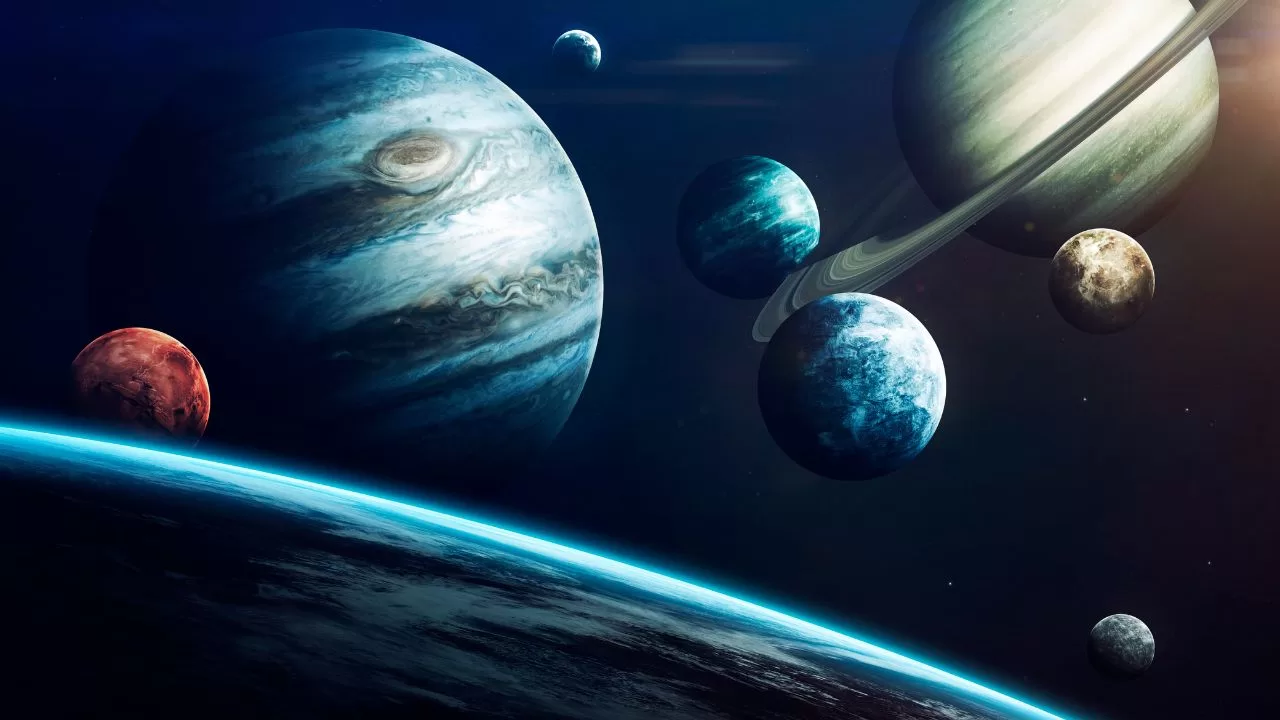
In the beginning, there was chaos.
Imagine a place so dark and so cold that no human eye could bear to witness it—a vast, formless void that stretched as far as the imagination could reach. Here, in the most isolated depths of space, we find the cradle of our solar family. A place where the miraculous is born from the mundane, and where the fabric of the cosmos is woven anew.
Now let your mind wander to a time over 4.6 billion years ago, when this void began to stir. In this cosmic nursery, deep within a frigid cloud of gas and dust, a quiet revolution was beginning. Our story, the story of our Solar System, commences here—in the cold and the dark, with a spark of divine orchestration.
In this nebula, a region known to astronomers as a ‘stellar nursery,’ something extraordinary happened. A disturbance—perhaps the shockwave from a distant supernova, or the close pass of a wandering star—sent a pulse through the cloud. In response, gravity, the eternal sculptor of the cosmos, began its masterful work. Particles, once distant and indifferent, felt a newfound attraction, an irresistible call to unite.
And unite they did. Slowly and gently at first, like a cosmic ballet, particles of dust and gas danced towards one another. They twirled and swirled in an increasingly fervent embrace, until they ignited the spark that would give birth to the Sun, the heart of our Solar System.
Picture this embryonic Sun, not as the blazing, brilliant star we know today, but as a humble, warming glow. In these early moments, our nascent Sun was surrounded by a spinning, flattened sphere of material—this was the protoplanetary disk, the raw material from which planets, moons, and all other celestial bodies in our Solar System would be forged.
The birth of a solar system is not a quiet affair. As our young Sun continued to gather mass, its temperature soared. Deep in its core, nuclear fires ignited, transforming hydrogen into helium in a radiant dance that released an outpouring of light and energy. The Sun, in its fiery might, had awoken.
Around this burgeoning star, the protoplanetary disk was a whirlwind of activity. Picture grains of dust, no larger than those you might find on a bookshelf, gently colliding and coalescing. Over tens of thousands of years, these grains became pebbles, pebbles became boulders, and boulders merged to form planetesimals. It was from this chaotic maelstrom that the foundations of planets were laid.
Scientists have woven these observations and deductions into a grand theory known as the Nebular Hypothesis. This theory, which has stood the test of painstaking observation and rigorous examination, paints a detailed portrait of our Solar System’s genesis. It suggests that the Sun, planets, and all other bodies in our Solar System formed from the collapse of a single, giant cloud of gas and dust. Like an artist with an eye for the finest details, this theory provides an elegant explanation for the patterns we observe in our Solar System today—the orbits of the planets, the composition of the asteroids, and the icy reservoirs of the comets.
Yet, like all great tales, the story of our Solar System’s birth is filled with twists and turns, with alternative theories and competing ideas that have risen and fallen in the face of new evidence. Some theories have suggested that our Sun might have stolen its planets from other stars, or that the building blocks of our world may have formed in the frigid depths of interstellar space long before our Sun was born.
Our understanding, though ever-growing, remains humbly incomplete. We are still the curious children of a vast and intricate cosmos, piecing together the story of our origin, chapter by chapter.
But in the heart of that story, in the echoes of that primordial nebula, we find a profound truth—that we are, in the most literal sense, stardust. We are the children of this miraculous process, born from the same cosmic furnace that forged our Sun and painted the vibrant tapestry of planets and moons that we call our Solar System.
And so, our journey through space and time begins—with the birth of a solar system, and the dawn of our cosmic story.
The Fiery Heart: Our Sun

In the center of our celestial family, reigning like an ancient monarch over its planetary court, lies the Sun—the Fiery Heart of our Solar System. It is a blazing sphere so vast that over a million Earths could fit within it. Without its warmth and brilliance, our world would be a lifeless, frozen wasteland. But what makes this giant tick? And what tales does it tell through its ever-changing face?
Let us venture closer to our Sun, though not too close, for its outer layer, the photosphere, simmers at a scorching 5,500 degrees Celsius (9,932 degrees Fahrenheit). It is here, in this outer shell, that the Sun’s energy is radiated as light and heat. When we gaze at the sky on a clear day, it is the photosphere we see.
Beneath this glowing surface lies a churning sea of plasma—the Sun’s outer layer, a place of unimaginable tumult and storm. Dive deeper still, and we encounter the radiative and convective zones, where energy generated in the Sun’s core begins its million-year journey outwards. At the heart of it all lies the core, the Sun’s innermost sanctum. Here, in a realm of incomprehensible heat and pressure, hydrogen atoms are fused into helium through nuclear fusion, releasing a torrent of energy that powers our Sun and bathes our Solar System in light.
But this is not mere science; this is alchemy on a cosmic scale. This nuclear fusion is the crucible in which all elements heavier than hydrogen were formed. The carbon in our cells, the oxygen we breathe, the iron in our blood—all were forged in the heart of stars.
And what of the Sun’s energy? It is nothing short of the lifeblood of our Earth. It fuels the photosynthesis in plants, which sustains our food chain. It drives the winds and the rains, shaping our climates and weather. It warms our seas and lands, making Earth a haven for life in the cold void of space. In bathing us in its light, the Sun sets the rhythm of our days and seasons—a celestial metronome to which all life dances.
But our Fiery Heart is not always calm. Gaze upon its face through a filtered telescope, and you may witness dark blemishes marring its golden visage—these are sunspots, cooler regions on the Sun’s surface, brooding and magnetic. They are the surface signatures of the Sun’s magnetic field, twisted and tangled like colossal cosmic spaghetti.
From these sunspots, when the magnetic tension becomes too great, the Sun occasionally throws a tantrum. Solar flares erupt—a sudden, intense burst of radiation. And sometimes, colossal clouds of solar material are hurled into space; these are coronal mass ejections. When these solar tempests reach Earth, they can ignite brilliant auroras, painting our skies with ghostly greens and reds, but they can also pose a threat, disturbing our satellites and power grids.
Our Sun, this Fiery Heart, is both nurturing and tempestuous. It is a celestial dynamo, an engine of energy and life. Yet, it is also a harbinger of solar storms and a sculptor of planetary fates. It is the star of our cosmic story—a story that is, in so many ways, the story of us all.
So, as we journey onwards, let us pay homage to our Sun. For within its fiery crucible lies the origin of our elements, and within its radiant energy lies the sustenance of our lives.
The Rocky Inner Planets
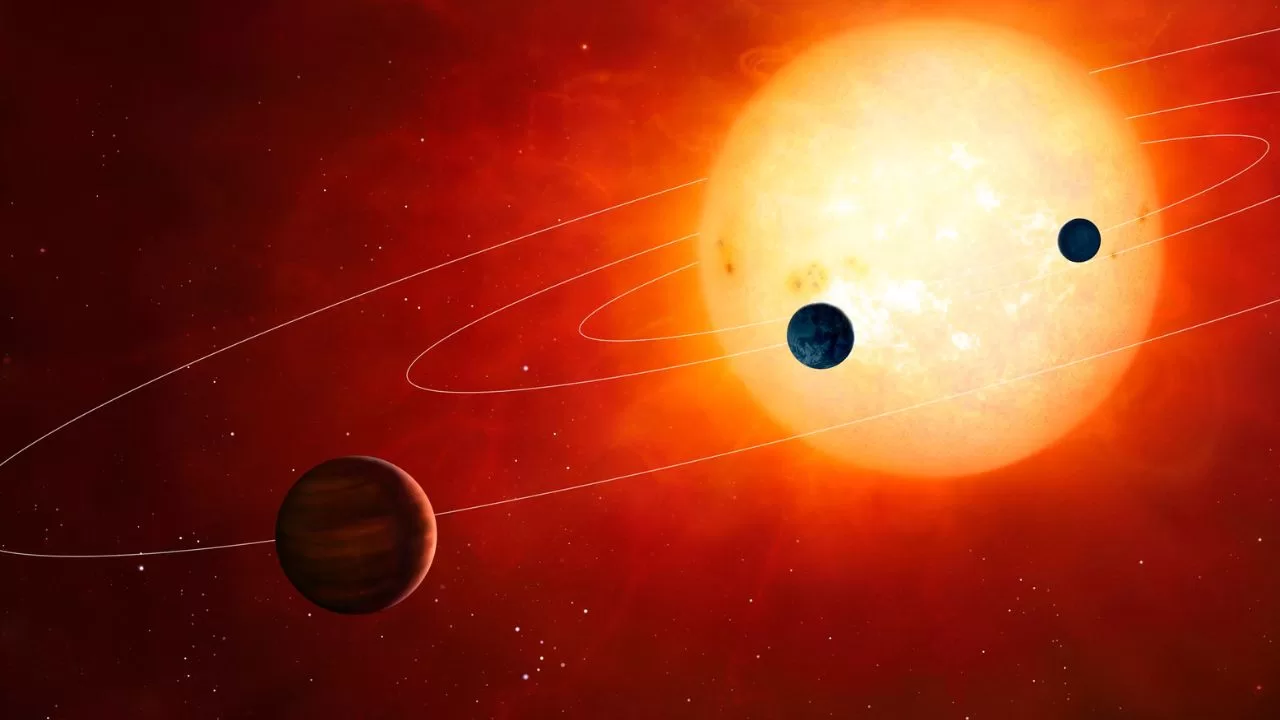
As we traverse the cosmic sea, leaving the blazing sphere of our Sun behind, we journey to the inner circle of our celestial family—Mercury, Venus, Earth, and Mars. Here in the inner sanctum of our Solar System, the rocky siblings dance in a delicate ballet around their fiery heart.
First, we encounter Mercury, the swift-footed messenger of the planets. Closest to the Sun, it races through its orbit in a mere 88 days. This diminutive world is a place of extremes. Its surface, scarred by countless craters, endures blistering days hotter than the hottest oven and frigid nights colder than the coldest winter on Earth. With virtually no atmosphere to speak of, Mercury is a silent, brooding sentinel.
Next, we voyage to Venus, Earth’s twisted sister, where beauty is but skin deep. Named for the Roman goddess of love and beauty, its dazzling brilliance belies a hellish reality. Beneath its thick, toxic atmosphere of carbon dioxide lies a surface hot enough to melt lead. Volcanoes dot its tortured plains, and sulfuric acid rains from its skies—but such rains never reach the surface; they evaporate in the searing heat below. This is a world where the sun rises in the west and sets in the east, a place of crushing pressures and fiery tempests.
Our next port of call is home—Earth, the blue jewel of our Solar System. From space, it is a mesmerizing orb of blues and whites, greens and browns—a world of vibrant life and varied landscapes. Its atmosphere, rich with oxygen and nitrogen, provides the breath of life and shields us from the Sun’s harsh rays. It is a world of liquid water, of oceans and rivers that carve and shape the land. Here is the cradle of humanity, the one place we know that life not only exists but thrives.
Lastly, we set a course for Mars, the red and restless warrior of the planets. With its iron-oxide soil, it paints the sky with hues of pink and the land with tones of rust. This is a world of towering volcanoes and deep canyons, of ancient riverbeds and polar ice. Its thin, cold atmosphere whispers the tale of a warmer, wetter past—a time when Mars may have resembled a young Earth. For centuries, Mars has been the muse of dreamers and the destination of robots, a place where we search for a second genesis of life.
How did these rocky siblings come to be so? Born from the same protoplanetary disk that birthed the Sun, they coalesced from the same nebular material. And yet, each has walked a path so divergent. Their geologies narrate tales of violent impacts, volcanic eruptions, and tectonic shifts. Their atmospheres—or lack thereof—are the results of both cosmic and internal forces, shaping and being shaped across eons.
Since antiquity, these planets have caught the eyes of observers. Early theories, born from meticulous skywatching, placed Earth at the center of a cosmic sphere. Others, like Copernicus, dared to place the Sun at the heart, with the planets, including Earth, in orbit—a revolutionary idea that redefined our place in the cosmos.
These rocky worlds are more than mere spheres of metal and stone—they are the first chapters in our Solar System’s family history, a comparative tale of planetary evolution under the nurturing yet relentless hand of our Sun.
As we journey through our story, we carry with us the wisdom of those who looked to the skies before us, and the knowledge that these rocky planets are keys to understanding not just our Solar System, but the potential for life-bearing worlds orbiting distant stars.
Earth – A Special Case
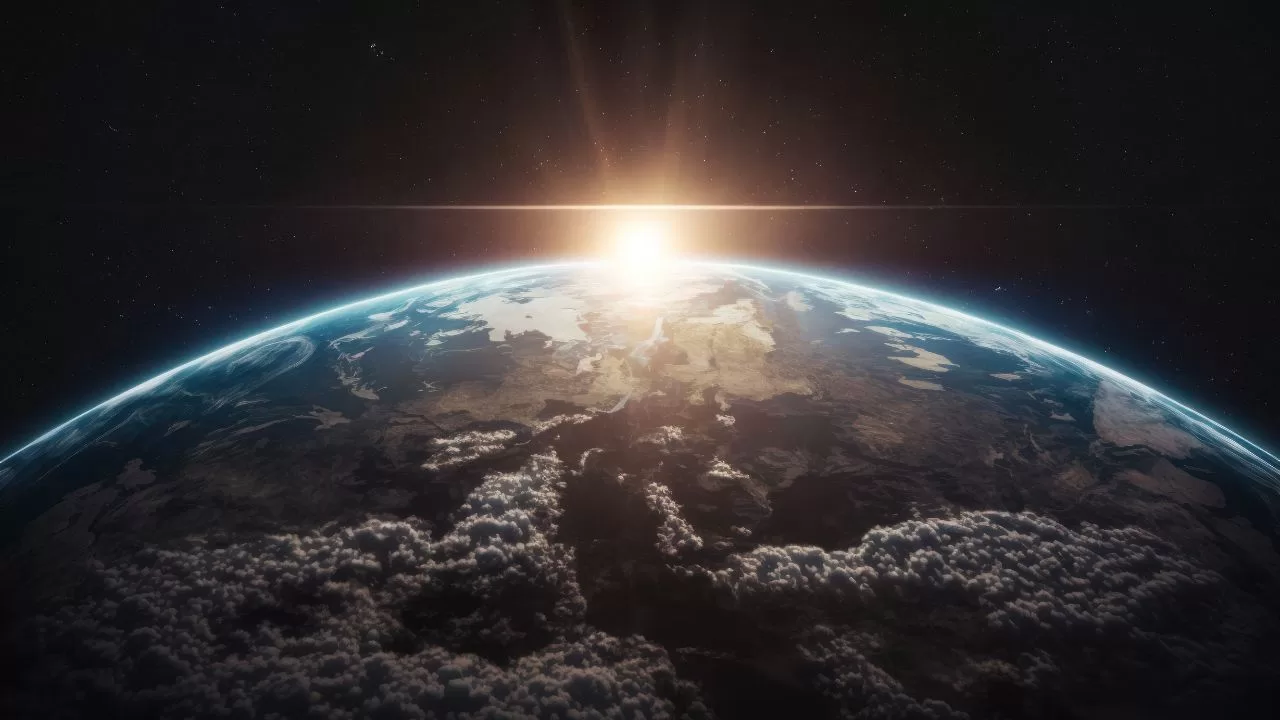
As we circle back through the cosmic sea to the third rock from the Sun, we find a planet unlike any other in our Solar System. Here is Earth, a vibrant, breathing world, teeming with life and adorned with a dazzling variety of landscapes. From the delicate blues of its oceans to the rich greens of its forests, Earth stands as a special case, a miraculous exception in the cold, dark vastness of space.
Our story unfolds around 4.5 billion years ago, with a cataclysmic event that would shape the destiny of our world. In the chaotic infancy of the Solar System, a rogue object the size of Mars, named Theia by those who would later tell its tale, collided with the young Earth. From this violent embrace, debris was hurled into Earth’s orbit, and, as the cosmic dust settled, this debris slowly coalesced into a glowing, new-born satellite. Our Moon was born, forever bound to Earth, its partner in a cosmic waltz that stabilizes our planet’s rotation and orchestrates the rhythms of our tides.
With our constant companion, the Moon, watching over, Earth began the next chapter of its story: the birth of life. In the warm, mineral-rich waters of ancient oceans, through a complex dance of chemistry and energy, the first simple life forms emerged. From these humble beginnings—perhaps in deep-sea vents or warm, shallow pools—life unfurled in an explosion of diversity. Single-celled organisms gave way to complex, multicellular life, leading to the tapestry of flora and fauna that weaves across our globe today.
But Earth’s tale is also one of change, for our planet is not a static stage, but an ever-evolving landscape. Our climate, that complex and delicate system, has shifted and swayed through time. From ice ages that gripped the globe in frosty stillness to hothouse periods when lush forests spread even to the poles, Earth’s climate has been a dynamic and changing force. It has shaped life, driving evolution through natural selection, and life, in turn, has shaped the climate—plants helping to create the oxygen-rich atmosphere we breathe today.
Humans, too, have become potent sculptors of Earth’s environment. With our cities, our industries, and our agriculture, we have altered landscapes and shifted the balance of the climate. Our actions are woven into the Earth’s story now, a chapter still being written. We are both a product of Earth’s history and active participants in its future.
And so, as we stand on this unique, blue planet—a jewel of water and life in the stark vastness of space—we are reminded of our profound connection to Earth. It is our cradle and our home, the starting point of a journey that spans the cosmos.
It is a story of resilience and transformation, of a planet that has nurtured the most extraordinary phenomenon we know: life itself. And as stewards of this exceptional world, we hold in our hands the pen that will write the next chapter of Earth’s epic.
The Gas Giants

As we venture beyond the rocky realms of the inner solar system, our celestial voyage takes us into the dominion of giants. Here, in the outer reaches where the Sun’s warmth is but a distant whisper, we find the majestic lords of our planetary family: Jupiter and Saturn, the Gas Giants.
First, we encounter Jupiter, the titan among planets, holding court with a commanding presence that dwarfs all its siblings. With a mass over 300 times that of Earth, this is the king of the solar system. Its atmosphere is a swirling tapestry of storms and clouds, painted in bands of rich browns, yellows, and whites. And among its tempests lies the Great Red Spot, a storm so vast that three Earths could fit within it—a tempest that has raged for centuries, maybe more. Jupiter, though a world of gas and storms, is the steadfast sentinel of our solar system, its massive gravity influencing paths of countless objects, both large and small.
Orbiting this colossal planet, we find an entourage of moons, each with its own story to tell. There’s Io, tormented by volcanic eruptions due to Jupiter’s gravitational pull; Europa, a world of ice with a potentially life-bearing ocean beneath; and Ganymede, the largest moon in the solar system, even surpassing Mercury in size.
Beyond the realm of Jupiter, we arrive at Saturn, the ringed monarch, whose grace and beauty have captivated the imaginations of stargazers for millennia. Encircling it are its iconic rings, a dazzling halo composed of countless fragments of ice and rock, ranging from grains of dust to mountain-sized boulders. They are remnants of comets, moons, or perhaps a planetesimal from the early solar system, forever entranced by Saturn’s gravity.
Saturn’s family of moons is as diverse as it is extensive. Titan, its largest moon, stands out with its thick, nitrogen-rich atmosphere and lakes of liquid methane, making it one of the most Earth-like worlds we’ve found—yet twisted and alien in its frigid chemistry.
But these gas giants are more than mere planetary spectacles; they are the architects of our solar system. Their immense gravity acted as a shepherd in the solar system’s youth, herding and shaping the paths of countless planetesimals. It was their influence that helped to sculpt the order we observe today, and it is their continued presence that maintains stability among the outer planets and the Kuiper Belt beyond.
They are also the protectors of the inner realms. With their massive bulk, Jupiter and Saturn have played the role of cosmic shield, their gravity drawing in and capturing many a wandering comet or asteroid that might have otherwise set a course for the inner solar system.
As we orbit these gas-clad titans, we are reminded that they are more than just planets; they are the keystone of our solar system’s structure, the lords that hold sway over the rhythm and harmony of our celestial neighborhood.
In the court of the Sun, they are indeed the kings and queens, holding dominion over a realm that is both majestic and mysterious.
The Ice Giants

As we continue our voyage beyond the regal courts of Jupiter and Saturn, we venture into colder, more mysterious realms. Here, at the very edges of our Sun’s dominion, where its golden light reaches only as a faint, far-off glimmer, we find the enigmatic duo of our planetary family: Uranus and Neptune, the Ice Giants.
First, we encounter Uranus, a world that defies convention. It is the rebel of the solar system, rotating on its side in a way that no other planet does. One might imagine it as a giant, rolling ball rather than a spinning top. Its pale blue hue, a result of the methane in its atmosphere, hides a frigid and complex interior. Here is a planet where water, ammonia, and methane mix to form a slushy, icy mantle above a rocky core. Uranus holds its own mysterious charm—it is a world of faint, delicate rings and a family of diverse moons, each with its own unique geology and history.
Journeying further into the cold dark, we arrive at Neptune, the sentinel at the solar system’s frontier. A deeper, richer blue than Uranus, Neptune is a stormy, windy world, with supersonic gusts that race through its thick atmosphere. The planet’s most famous storm, the Great Dark Spot, was a tempest as large as Earth, though it has since disappeared, showcasing Neptune’s ever-changing weather. Like its sibling Uranus, Neptune too holds secrets beneath its clouds, with an internal structure composed of vast oceans of water, ammonia, and methane.
Yet, these Ice Giants are not lonely sentinels in the cold dark. They too have their companions. Take Neptune’s moon Triton, a frozen world with geysers spewing nitrogen into space, likely a captured object from the Kuiper Belt, or Uranus’s moon Miranda, with its bizarre, patchwork-like surface that suggests a violent, disruptive past.
Despite their distance, humanity’s curiosity has propelled our robotic emissaries to these far-off worlds. The Voyager 2 spacecraft, a silent and steadfast explorer, is the only mission that has visited these distant giants, and its brief flybys in the 1980s provided our first close-up glimpses of Uranus and Neptune, turning points in our understanding of these planets. As of now, new missions to these distant worlds are the dreams of scientists, dreams that hold the promise of untangling the mysteries that the Ice Giants guard.
In the remote, icy realms of the solar system, Uranus and Neptune stand as gatekeepers to the interstellar void beyond. They are the last defined stops on our solar journey, the mysterious final chapters in the Sun’s narrative, holding keys to understanding not just our own solar system, but potentially the nature of far-off exoplanets orbiting other stars.
As we linger in the cold shadow of these distant giants, we are reminded that our solar system is a place of boundless wonder, a tapestry woven with stories still waiting to be told…
The Small Bodies: Asteroids, Comets, and Dwarf Planets
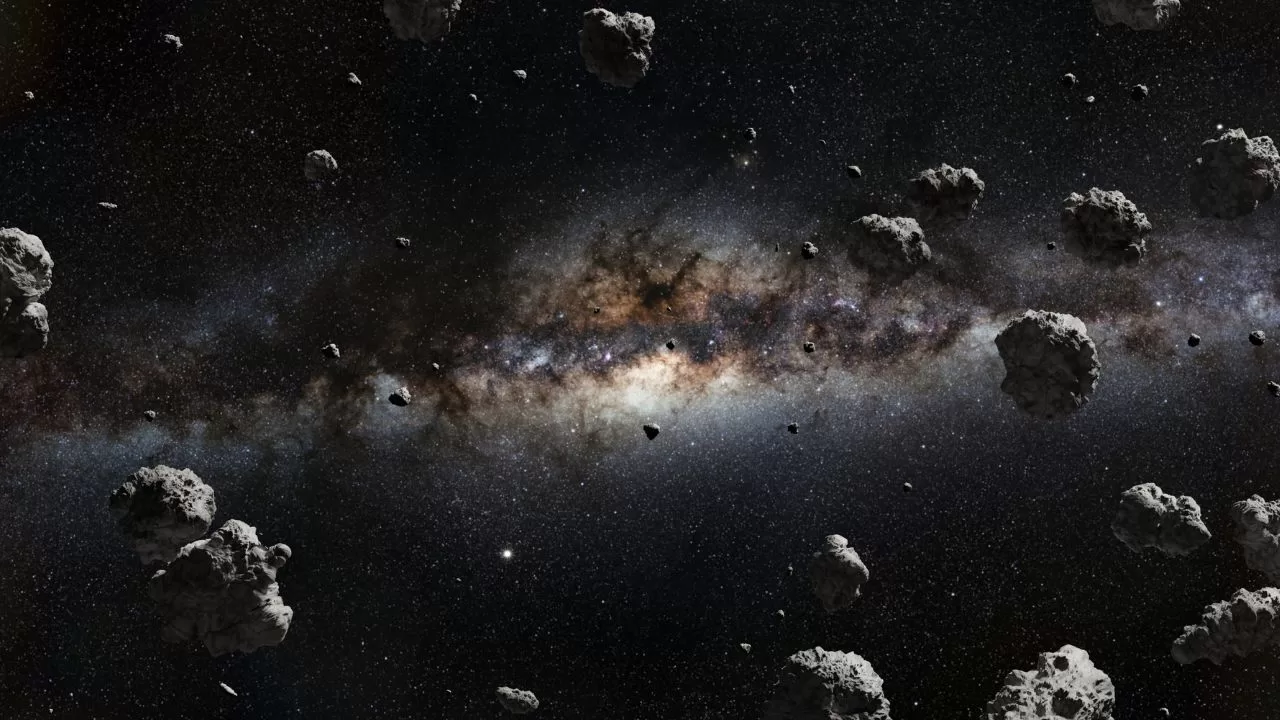
As our celestial odyssey sails further, beyond the majesty of the gas and ice giants, we arrive at the frontier of our Sun’s influence. Here, in the vast stretches of space that link the planets to the stars, we find not emptiness, but a treasure trove of the solar system’s smaller denizens: the Asteroids, Comets, and Dwarf Planets.
Our first stop is the Asteroid Belt, a swirling ring of rocky relics nestled between the orbits of Mars and Jupiter. Imagine a vast, cosmic quarry, where rocks of all sizes dance and twirl in a celestial ballet. These are the remnants of a world that could have been—a planet that might have formed were it not for Jupiter’s powerful gravity preventing its birth. Among these, we find Ceres, the largest object in the belt and a reclassified ‘dwarf planet,’ a window into the early solar system, holding clues to the ingredients that seeded our Earth with water and the essential elements for life.
Beyond Neptune’s orbit, our journey takes us to the Kuiper Belt, a frigid expanse where countless icy bodies—including the beloved Pluto—make their slow orbits around the Sun. Once known as the ninth planet, Pluto, with its heart-shaped glacier and thin atmosphere, was rebranded as a ‘dwarf planet’ by a decision that stirred hearts globally. Here in the Kuiper Belt, Pluto is in good company, accompanied by other intriguing worlds like Haumea, the elongated dwarf planet, and Eris, whose discovery was pivotal in redefining our very notion of what a planet is.
But our voyage doesn’t end here. Farther still, stretching to the edge of the Sun’s influence, lies the elusive Oort Cloud. This vast, spherical shell of icy bodies is the birthplace of the comets. Imagine it as the solar system’s icy outer shell, a frozen archive that preserves the pristine conditions of the solar system’s formation over 4.5 billion years ago. When one of these icy relics feels the tug of a passing star, it may fall towards the Sun, igniting into a brilliant comet as the Sun’s warmth sublimates its ices into a glowing halo and a trailing tail.
These small bodies, diverse and numerous, are not mere footnotes in our solar story. They are the solar system’s memory keepers, the primordial remnants that have survived the eons largely unchanged. They hold the secrets of our past, the records of the early solar system from which all the planets, including Earth, were molded. Studying them is akin to reading the oldest chapters of our cosmic history book, allowing us to unravel the conditions that set the stage for the solar system as we know it.
As we drift among these ancient stones and ices, we are reminded that in their quiet, enduring way, they tell a tale as grand and as vital as that of any planet or star—a tale of origins, evolution, and the intricate ballet that is our solar system.
Human Exploration and Robotics

Our tale now shifts, from the distant celestial objects in the night sky to the adventurers who dared to reach for them. As we set our sights back towards Earth, we find it to be a world buzzing with a different kind of energy, the spirit of exploration. Here on this vibrant blue planet, we, the story’s narrators, have looked up for generations, dreaming of touching the stars.
Our first strides were taken by pioneers of metal and circuitry: the robotic explorers. Remember Voyager, humanity’s bold message in a bottle, cast into the cosmic sea. Launched in the late 1970s, these twin spacecraft provided our first detailed portraits of the giant planets and are now the farthest human-made objects from Earth, carrying a golden record with sounds and images of our world into the interstellar void.
Then, consider the flotilla of Mars Rovers—from the early forays of Sojourner to the sophisticated science labs that are Curiosity and Perseverance. These tireless robots, our avatars on a distant world, have trekked across Martian plains, scaled its hills, and sought signs of ancient water and life.
But it was not enough to send our proxies; the human spirit demanded that we venture forth ourselves. The Apollo Missions of the 1960s and 1970s stand as a testament to what we can achieve when we aim for the stars—or, more precisely, the Moon. The image of a human footprint on the lunar regolith, stark and enduring, became a symbol of a new era.
And then came the effort to not just visit, but to stay. The International Space Station (ISS), a marvel of international cooperation and engineering, orbits Earth as a testament to what humanity can achieve when united in purpose. It is our home in the void, where we have learned to live and work in space.
Looking to the horizon, the next chapters are already being written. The Artemis Program aims to return humans to the Moon, this time to stay, as a stepping-stone for even more daring voyages. And Mars, that tantalizing red jewel, beckons ever closer, with plans taking shape for the first human footsteps to grace its soil. Beyond, the vast cosmos calls, almost in reach.
The challenges of these journeys are monumental. Space, after all, is indifferent to human life—hostile, even. It demands of us ingenuity, resilience, and unity. Yet, the rewards are beyond measure: the expansion of knowledge, the fostering of unity, and the survival and thriving of humanity in new, extraterrestrial homes.
As our story unfolds, it is us, the people of Earth, who become the explorers, the adventurers. We are the ones who dare to dream and to act, to reach out into the dark in search of light, knowledge, and a future among the stars. Our tale is still in the making, every launch adding a new line, every discovery a new chapter.
Life Beyond Earth
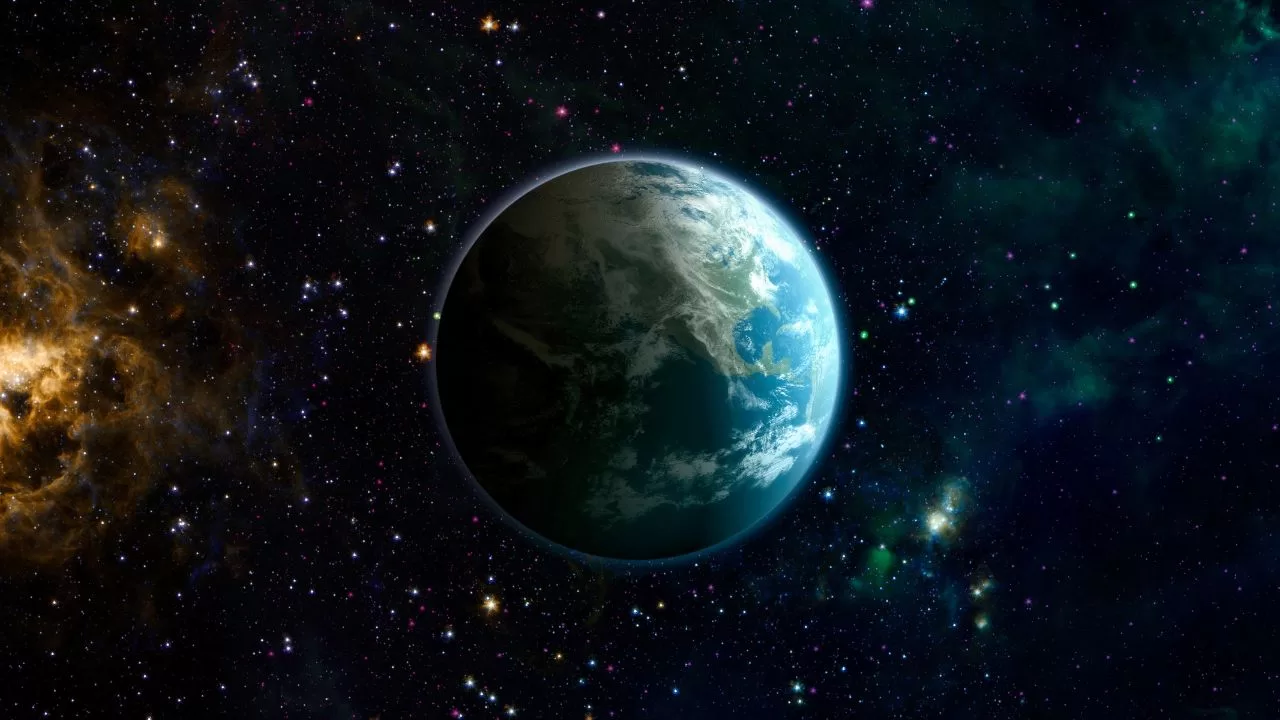
In the boundless tapestry of the cosmos, amid countless stars and planets, a profound question beckons: Are we alone? Our next chapter delves into one of humanity’s oldest and most profound questions, an odyssey not of miles traveled but of understanding deepened, as we seek the signature of life beyond our home.
In our quest, we cast our senses wide. Far from Earth, great radio dishes strain to hear whispers across the cosmic sea. This is the work of SETI, the Search for Extraterrestrial Intelligence, a grand endeavor to sift the radio waves of the universe, listening for the telltale signs of a signal not born of quasars or pulsars, but of someone like us. Could there be others, gazing across the void, wondering as we wonder? SETI represents our open ear, our extended hand, waiting for the universe to greet us back.
Closer to home, our robotic scouts explore new frontiers in the name of this ancient question. We look to Mars, where rivers once flowed. Could remnants of past life be etched into its red rocks? To Europa, the ice-shrouded moon of Jupiter, and Enceladus, Saturn’s shining satellite, where vast oceans lie sealed beneath miles of ice. In these dark, warm waters, could life’s delicate dance be playing out as it did in our own deep past? The upcoming missions to these icy worlds are penned as hopeful prologues to what may be humanity’s most profound discovery.
Yet, as we reach further, ethical echoes reverberate back at us. For in seeking life, we risk bringing harm. The microbes of Earth, stowaways on our spacecraft, could contaminate other worlds, making us destroyers as we seek to be discoverers. And what if our signals, broadcasted so hopefully into the void, were received by others not benevolent, but hostile? As we peer outwards, we are forced to look inwards, to weigh the moral fabric of our quest. Space, the vast frontier, presents not just scientific challenges, but ethical ones.
This chapter of our cosmic story is wrought with tantalizing possibilities and sobering responsibilities. It is a narrative of potential and caution, written with the ink of curiosity and read with the eyes of hope. Are we, the children of this pale blue dot, the sole thinkers in a vast, thoughtless cosmos? Or is the universe a grand, teeming ocean of life, waiting for us to dip in our toes and discover that we are, in fact, not alone?
Our quest for life beyond Earth is more than science; it is a reflection of humanity’s soul, a testament to our innate need to explore and to belong. It is a journey that may one day redefine our place in the universe, and it is a story that we are writing with every question we ask and with every step we take into the great unknown.
The Fate of Our Solar System
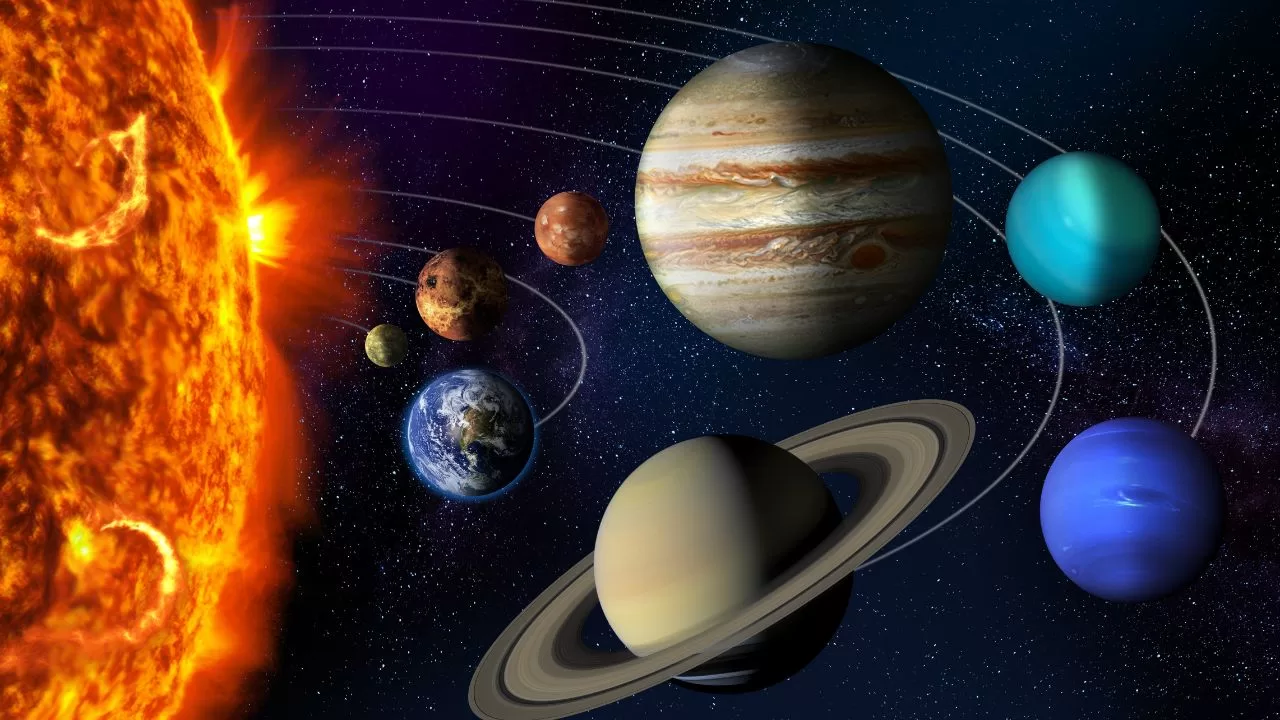
As our celestial voyage nears its conclusion, we must cast our eyes forward, into the deep stretches of time, to ponder the inevitable closing chapter in the story of our solar neighborhood. For all its grandeur and vibrancy, our solar system, like all things, has a fate that awaits it in the distant future.
At the heart of our cosmic tale stands the Sun, our life-giving star, the fiery monarch of the solar system. But even stars have their twilight. In about five billion years, as its hydrogen fuel dwindles, our Sun will undergo a magnificent, albeit violent, transformation. It will swell into a red giant, its outer layers billowing outward, a celestial giant gasping its last breaths. Mercury and Venus are likely to be swallowed in this fiery embrace, and Earth’s oceans will boil under the intensified glare. Our once warm and golden Sun will cast a deep crimson hue upon the remaining worlds.
Eventually, the Sun, having cast off its outer layers, will reveal a hot core, a white dwarf that will glow with a ghostly light. Around it may swirl a beautiful nebula, the last poetic gasp of the star that gave us life, a monument to its once vibrant existence.
What of the planets, those steadfast companions on our solar journey? They too will face changes. As the Sun expands and contracts, their orbits may shift; some might collide or be flung into the dark void. The outer gas giants will watch from their distant thrones as their sun, now a dim white dwarf, cools and fades over eons.
And here, at the close, we are drawn to reflection. For in the story of our solar system, we glimpse the story of everything. Birth and death, creation and destruction, the ebb and flow of time that governs not just stars and worlds, but us as well. Our solar system’s story tells us of our fleeting but wondrous place in this grand cosmic narrative. It is a humbling reminder that we are part of something far larger than ourselves, a brief but brilliant chapter in an epic that spans billions of years.
But even as our Sun’s light will one day fade, it does not spell an end, but a transformation—a metamorphosis of matter and energy. In this future, perhaps our descendants, or the legacy of our knowledge and culture, will have journeyed to new stars, new worlds, carrying with them the story of a small, warm star and its family of planets that once spun together through the void.
Thus, our tale is not one of despair, but of hope and continuity, of the unbroken thread that links our past to a future beyond our imagining. As we have explored, so may others after us. As we have wondered, so will the universe continue to inspire wonder, long after our Sun has dimmed.
And so, our story—a tale spun from stardust and curiosity—echoes onwards, into the boundless tapestry of time and space.
The Solar System in Culture and Mythology

As our voyage through space and time draws to a close, we turn our gaze back to Earth and embark on a different kind of journey—one that meanders through the corridors of human history, imagination, and culture. For the celestial bodies that dance in our night sky have long held a special place in the tapestry of human thought and belief. In this bonus chapter, we explore how our solar system has been a canvas upon which countless stories have been painted.
Long before telescopes could bring the planets close, and before spacecraft could visit them, people around the world looked up. From the ancient civilizations of Mesopotamia, where the wandering planets were seen as emissaries of the gods, to the Maya, whose intricate calendar systems were intertwined with the cycles of Venus, the solar system has been more than a collection of rocks and gas—it has been a theater of divine drama. In Greece and Rome, planets were named after gods—Mars, the bringer of war; Venus, the embodiment of love and beauty—while in China, they were seen as celestial palaces of heavenly beings.
The allure of these shining orbs inspired more than just myth. They have been muses to poets, who in their verses have tried to capture the majesty of a moonlit night, and painters, who on their canvases have tried to seize the fleeting hues of a twilight sky. From the Starry Night of Van Gogh to the cosmic ponderings of Carl Sagan, our solar system has found itself immortalized in strokes of paint and strokes of the pen alike.
And as our knowledge grew, so did our imagination. The modern era brought a new genre into the world: science fiction. The Red Planet, Mars, once the god of war, has become a canvas for tales of martian civilizations, of canals and warriors. And it’s not alone. From the stormy vortices of Jupiter in Arthur C. Clarke’s stories to the icy plains of Pluto in recent cinema, the solar system has become a backdrop against which our most fantastical stories unfold.
In this realm of fiction, we grapple with questions that science alone cannot answer. What does it mean to be human as we extend our reach beyond Earth? How do we understand ourselves when we are but a small part of a vast solar ballet? Sci-fi, in mirroring our scientific endeavors, allows us to explore not just space, but the internal frontiers of our ethics, our society, and our identity.
Our solar system, thus, is more than a collection of physical bodies. It is a mirror reflecting our deepest fears and greatest hopes. It is both our oldest companion and an ever-new frontier, a constant reminder that our capacity to wonder and to dream is as boundless as the cosmos itself.
And so, as we orbit our star on this blue marble, we are not just passengers on a cosmic journey, but storytellers in an epic that weaves together science, art, myth, and imagination. Our solar system, our celestial home, is and will always be an integral part of the human story.
Conclusion
And here, dear voyager, we stand at the end of an epic journey—a journey that has spanned the swirling birth of stars and planets, the fiery majesty of our Sun, the diverse worlds that share our cosmic neighborhood, and the boundless human imagination that has woven tales around these celestial bodies for millennia.
As we’ve ventured through space and time, we’ve danced with planets, reveled in the light of our Sun, and pondered the frigid mysteries of distant ice giants. We’ve seen how small bodies, often overlooked, have played colossal roles in shaping the history of our solar system. We’ve borne witness to the daring spirit of human exploration, as robotic scouts and intrepid astronauts extend our senses to new worlds.
We’ve peered into the future, glimpsing the eventual twilight of our Sun and pondering the ultimate fate of our planetary family. And, through the lens of culture and myth, we’ve discovered that the solar system is more than a scientific wonder—it’s a vibrant character in the stories we tell, reflecting our dreams, our fears, and our profound sense of curiosity.
But let us not view this as an ending, for the universe is a grand and continuing story. With every telescope we peer through, every spacecraft we send forth, and every theory we construct, we are not closing a chapter but turning a page. The solar system, our home, is but the prologue to a narrative that extends far beyond our own star and its orbiting companions. It is a gateway to the wider cosmos, a starting point for journeys yet to come.
So, as we stand here, at this juncture between what is known and the vast unknown that stretches out before us, we are reminded that we are both humble and extraordinary. We are small in the face of the cosmic scale, and yet, it is we who are the storytellers, the explorers, the dreamers. We are the ones who give voice to the universe, who seek to understand its intricate plotlines and who dare to imagine its unwritten chapters.
In that spirit, our voyage never truly ends. With eyes lifted to the skies and minds hungry for understanding, we continue to journey, to explore, and to marvel at the wonders of the cosmos.
Dear voyager, the story of our solar system is not just a tale of stars and stones; it is, in every sense, our story. And what a magnificent story it continues to be.
Keywords
Cosmic Chronicles: A narrative journey through the vast and awe-inspiring universe, often telling the story of celestial objects and phenomena.
Solar System: Our Sun and all the celestial bodies that are gravitationally bound to it, including the planets, moons, asteroids, and comets.
Protoplanetary Disk: A rotating disk of gas and dust surrounding a young star, from which planets and other solar system bodies may form.
Nebular Hypothesis: A widely accepted theory that describes the formation of our Solar System from a giant cloud of gas and dust.
Sunspots: Dark, cooler areas on the surface of the Sun, caused by interactions with the Sun’s magnetic field.
Solar Flares: Explosive bursts of energy and light from the Sun’s surface, often associated with sunspots and solar storms.
Mercury: The smallest and innermost planet in our Solar System, known for its swift orbit around the Sun.
Venus: Earth’s “sister planet,” similar in size and composition but with a thick, toxic atmosphere and scorching surface temperatures.
Mars: The “Red Planet,” known for its iron oxide surface that gives it a reddish appearance.
Moon Formation: The process by which Earth’s Moon formed, likely from a massive impact event early in the Solar System’s history.
Life on Earth: The complex, diverse, and evolving community of organisms, from single-celled bacteria to humans, that inhabit our planet.
Climate Change: Long-term shifts and alterations in temperature and weather patterns, primarily caused by human activities.
Jupiter: The largest planet in our Solar System, a gas giant known for its massive size and iconic Great Red Spot.
Saturn: The sixth planet from the Sun, known for its stunning and complex ring system.
Ice Giants: The term for the cold, large gas planets in our Solar System: Uranus and Neptune.
Uranus: The seventh planet from the Sun, known for its blue color and unique sideways rotation.
Neptune: The eighth and farthest known planet from the Sun, a frigid world with a deep blue appearance.
Asteroid Belt: A region of space between the orbits of Mars and Jupiter where most of the Solar System’s asteroids are found.
Kuiper Belt: A distant region of the Solar System beyond Neptune’s orbit, populated with icy bodies and dwarf planets, including Pluto.
Oort Cloud: A hypothetical, spherical region at the outermost edge of the Solar System, where long-period comets are believed to originate.
Pluto: A dwarf planet in the Kuiper Belt, known for its complex and varied surface.
Space Exploration: The use of astronomy and space technology to explore outer space, physically (with spacecraft) or by observational tools.
Voyager Missions: A pair of NASA spacecraft launched in 1977 to study the outer Solar System and interstellar space.
Apollo Program: The United States’ lunar exploration program that sent astronauts to the Moon between 1961 and 1972.
International Space Station (ISS): A modular space station (habitable artificial satellite) in low Earth orbit.
Artemis Program: A planned series of lunar missions by NASA, with the goal of returning humans to the Moon and establishing a sustainable presence there.
Exoplanets: Planets that orbit a star outside the Solar System.
SETI: Acronym for the Search for Extraterrestrial Intelligence, which is a collective term for scientific searches for intelligent extraterrestrial life.
Ethical Considerations: Moral implications and responsibilities associated with activities such as space exploration.
Red Giant Phase: A late stage in the life of a star, during which it exhausts the hydrogen in its core and expands, becoming much larger and brighter.
Key Takeaways
Formation and Evolution:
The Solar System began as a spinning disk of gas and dust, eventually forming our Sun and all the planets, moons, and other celestial bodies we observe today.
The Sun’s Vital Role:
Our Sun is not just a star; it is the powerhouse of the Solar System, sustaining life on Earth and governing the movements of all celestial bodies around it.
Diverse Planetary Bodies:
Each planet in our Solar System, from the rocky inner planets to the gas and ice giants, is unique, with its own history, geology, and potential for life.
Earth’s Special Circumstances:
Earth’s conditions, from its distance from the Sun to the presence of water, are exceptionally suited for life, making it a unique case in our Solar System.
Moon’s Origin and Connection to Earth:
The Moon likely formed from a colossal impact event, and its history is intimately tied to the development and stability of Earth’s climate.
Outer Giants as Solar System Shepherds:
The gas and ice giants (Jupiter, Saturn, Uranus, and Neptune) have played a significant role in shaping the Solar System, from planet formation to redirecting comets and asteroids.
Small Bodies with Big Stories:
The asteroid belt, Kuiper Belt, and Oort Cloud are not just debris; they are remnants of the Solar System’s formation and hold clues to our past.
Human Exploration and Innovation:
Human ingenuity has allowed us to venture beyond our home planet, through manned missions to the Moon and robotic explorers sent to distant worlds.
Search for Extraterrestrial Life:
Our quest to find life beyond Earth, through programs like SETI and the study of exoplanets, is a central theme in modern science.
Ethical Dimensions of Exploration:
As we explore further, we must consider the moral and ethical implications of our actions, including the potential effects on other worlds.
Solar System’s Fate and Sun’s Lifecycle:
Our Sun, like all stars, has a life cycle, and its eventual transition to a red giant will have profound effects on our Solar System.
Cultural Connections and Impact:
The Solar System has been a central figure in human culture, from ancient mythology to modern science fiction, reflecting our enduring fascination with the cosmos.
Our Place in the Universe:
The story of our Solar System is a chapter in the larger narrative of the Universe, and it prompts us to reflect on our place and role within this vast expanse.
Frequently Asked Questions
Why is Pluto no longer considered a planet?
Once upon a time, in a meeting of astronomers, a decision was made that forever changed Pluto’s status. To be a planet, a body must orbit the sun, be spherical, and have cleared its orbit of other debris. Pluto, sharing its space with other icy bodies in the Kuiper Belt, didn’t meet the third criterion, so it was reclassified as a dwarf planet in 2006. It’s still an important member of our Solar System, just with a different title!
How did the planets get their names?
Our ancestors looked to mythology when naming the planets. Most are named after Roman gods: Mars, the red planet, named for the god of war; Jupiter, king of the gods; and so on. Each name tells a story from a time when planets were the wandering stars of ancient nights.
What is the asteroid belt and why is it there?
Imagine a cosmic battlefield where early planets jostled for space. That’s the asteroid belt, a ring of rocky remnants between Mars and Jupiter. It’s believed that Jupiter’s strong gravity prevented these rocks from forming into a planet, leaving us with a ‘museum’ of the early Solar System!
How do we know what the inside of planets are like?
It’s like being a cosmic detective! We study seismic waves on Earth, observe gravity’s effects on spacecraft, and examine meteorites that have fallen to Earth. With this data, we can piece together the layered stories of planetary interiors, each with its own dramatic narrative.
Why are some moons as complex as planets?
Meet Titan and Europa, moons that could rival any planet with their complexity. These moons likely formed from the same spinning disk of materials that their parent planets did, inheriting a wealth of elements that have driven fascinating geologic and potentially even biological stories.
What is the Sun made of?
The Sun, our glowing guardian, is mostly hydrogen and helium, the simplest and most abundant elements in the universe. Through a process called nuclear fusion, the Sun’s core weaves hydrogen into helium, releasing the energy that lights and warms our Solar System’s grand stage.
Why don’t comets melt when they are so close to the Sun?
As cosmic snowballs made of ice and dust, comets do actually start to melt as they approach the Sun! They develop bright tails, which are streams of gas and dust that the Sun’s heat is ‘stealing’ away. However, their icy core is insulated enough that it doesn’t all melt at once, allowing comets to survive multiple trips around the Sun.
What’s the difference between a meteoroid, a meteor, and a meteorite?
Picture a rock in space, destined for a fiery date with Earth. In space, it’s a meteoroid. As it blazes through our atmosphere, creating a streak of light, it becomes a meteor. If it survives the journey to grace Earth’s surface, it earns the name meteorite. It’s one character in a story, with three acts.
Could there be another planet in our Solar System that we haven’t discovered yet?
Ah, the tale of Planet Nine, a world that might lurk unseen in our Solar System’s outskirts. Astronomers have noticed that some objects in the Kuiper Belt follow peculiar orbits that suggest they’re being tugged at by a larger, distant object. Whether this is a new planet or not is one of our Solar System’s current cliffhangers!
Why does Venus spin the opposite way?
Venus, the twisted sister of the Solar System, spins in the opposite direction from most planets. One theory is that long ago, a catastrophic collision with another large body could have caused this odd spin, leaving Venus to tell a tale of a dramatic past with every slow rotation it makes.
Myth Buster
Myth: The Sun is a ball of fire.
Debunk: Picture instead a gigantic nuclear reactor, not a bonfire. The Sun’s energy comes from nuclear fusion, where hydrogen atoms are pressed together to form helium, releasing an immense amount of energy. Fire, our familiar friend on Earth, requires oxygen, which the Sun does not use to shine.
Myth: Planets orbit the Sun in perfect circles.
Debunk: Imagine, instead, slightly stretched-out circles, or ellipses. Kepler, the storied astronomer, set the scene with his laws of planetary motion, showing that planets orbit in elliptical paths, with the Sun slightly off-center.
Myth: Mercury is the hottest planet because it’s closest to the Sun.
Debunk: In a surprising twist, Venus, veiled under thick clouds, takes the crown as the hottest planet. Its dense, CO2-rich atmosphere traps heat in a runaway greenhouse effect, making it hotter than Mercury despite being further from the Sun.
Myth: The Moon is always the same distance from Earth.
Debunk: Picture the Moon in a delicate dance with Earth. Sometimes it comes closer (perigee) and sometimes it moves farther away (apogee). This ever-changing distance is why we have ‘supermoons’ and ‘minimoons’ as the chapters of months unfold.
Myth: The Great Wall of China is the only human-made object visible from space.
Debunk: From the lofty heights of orbit, astronauts can see many human stories – cities, major roads, and airports, not just the Great Wall. In fact, from the moon, the Wall is quite hard to discern, but our cities glow brightly, penning tales of life below.
Myth: There is a dark side of the Moon that never sees light.
Debunk: Every side of the Moon has its day. While one side of the Moon always faces Earth due to synchronous rotation (hence, the ‘near side’), both sides receive sunlight as the Moon orbits Earth, just like turning the pages of a well-loved book.
Myth: Shooting stars are stars falling from the sky.
Debunk: These fleeting, magical streaks are not stars at all but rather meteoroids burning up as they enter Earth’s atmosphere. The term “shooting star” is a tale from a time before we understood what these bright streaks in the night sky really were.
Myth: The Sun is stationary.
Debunk: Our Sun, like a nomadic traveler, is actually moving through space, orbiting the center of the Milky Way Galaxy at an impressive speed. Our entire Solar System journeys with it, on a cosmic road trip that spans millions of years.
Myth: Pluto was demoted from planet status as a punishment or insult.
Debunk: The story of Pluto is one of evolving knowledge, not spite. As we discovered more objects similar to Pluto in the Kuiper Belt, it became clear that Pluto was just one of many similar bodies. The reclassification to ‘dwarf planet’ was a move to keep the chapters of planetary science clear and consistent.
Myth: Space is a complete vacuum, utterly empty.
Debunk: Space is more like the setting of a complex drama than an empty stage. It’s teeming with particles, like cosmic dust and gas, and is threaded through with magnetic fields and the solar wind. While it’s much emptier than any environment on Earth, it’s far from a perfect vacuum.
Test Your Knowledge
What is the primary process that powers the Sun?
A) Combustion
B) Nuclear Fusion
C) Solar Flares
D) Gravitational Pull
B
Which planet is known as the hottest in the Solar System?
A) Mercury
B) Venus
C) Mars
D) Jupiter
B
What is the Moon’s closest point to Earth called?
A) Apogee
B) Perigee
C) Crescent
D) Gibbous
B
Which two planets are referred to as the ‘Ice Giants’?
A) Uranus and Neptune
B) Jupiter and Saturn
C) Mars and Venus
D) Earth and Mars
A
Which planet is known for its extensive ring system?
A) Jupiter
B) Mars
C) Saturn
D) Venus
C
Where is Pluto located?
A) Asteroid Belt
B) Kuiper Belt
C) Oort Cloud
D) Inside Neptune’s Orbit
B
What was the main goal of the SETI program?
A) Mapping the Moon
B) Searching for Extraterrestrial Life
C) Studying the Sun’s Solar Flares
D) Mars Colonization
B
Which space mission first landed humans on the Moon?
A) Apollo 11
B) Voyager 1
C) Mars Rover
D) Artemis
A
What will the Sun eventually become at the end of its life?
A) Black Hole
B) White Dwarf
C) Neutron Star
D) Red Giant
B
What is a common misconception about shooting stars?
A) They are stars
B) They are comets
C) They are meteoroids entering Earth’s atmosphere
D) They are satellites
A
How do different cultures around the world view celestial bodies in the Solar System?
A) With uniform interpretations
B) Through various myths and stories
C) They are generally ignored
D) As threats to Earth
B
Which celestial bodies are located in the Oort Cloud?
A) Asteroids
B) Comets
C) Planets
D) Stars
B
Which planet is known as the ‘Red Planet’?
A) Venus
B) Mars
C) Jupiter
D) Saturn
B
What is the main cause of seasons on Earth?
A) Earth’s distance from the Sun
B) The Moon’s gravitational pull
C) Earth’s axial tilt
D) Solar flares
C
Which of the following is NOT a dwarf planet?
A) Haumea
B) Eris
C) Pluto
D) Jupiter
D
What is the largest planet in the Solar System?
A) Saturn
B) Jupiter
C) Neptune
D) Uranus
B
What do we call a relatively small rocky body orbiting a star?
A) Comet
B) Asteroid
C) Dwarf Planet
D) Moon
B
What is the name of the Mars rovers sent to explore the Martian surface?
A) Voyager
B) Hubble
C) Opportunity & Spirit
D) Apollo
C
Which planet has the strongest magnetic field in the Solar System?
A) Mars
B) Jupiter
C) Earth
D) Neptune
B
What is the central, hottest part of the Sun called?
A) Solar Flare
B) Core
C) Corona
D) Photosphere
B
Let’s Discuss
Share your comments and ideas about any of the following topics/questions:
The Solar System as Art:
How might the planets, moons, and sun inspire different forms of art? Share your favorite space-inspired pieces or create your own.
Cosmic Reflections:
How does understanding the vastness of the Solar System affect your sense of self and your place in the universe?
Solar System Traditions:
How have different cultures throughout history celebrated celestial events, like eclipses or comet passings? Share traditions from your culture or learn about others’.
Interplanetary Travel:
If you could visit any planet or moon in our Solar System as a tourist, where would you go and why?
A Name for a Star:
If you had the chance to name a newly discovered celestial body, what would you name it and why?
Space in Storytelling:
How are planets and other celestial bodies portrayed in your favorite books, movies, or legends? Do these stories align with scientific facts?
Children of the Sun:
We and everything around us are made of ‘star stuff.’ How does this fact influence your connection with other people and the world?
Preserving the Night Sky:
How does light pollution in modern times affect our relationship with the cosmos? Share experiences of your most memorable night under the stars.
Messages to the Cosmos:
If you were to send a message or artifact representing humanity to space (like the Voyager Golden Record), what would you choose and why?
The Solar Connection:
Our lives are closely tied to the Sun, from our need for daylight to solar energy. How does the Sun play a role in your daily life, and how might this change in the future?
Check out the Solar System Article Series
Cosmic Chronicles: The Living Story of Our Solar System (Featured Article)
The Great Solar Show: Best Spots on Earth to Experience Solar Phenomena
The Real Martians: A Deep Dive into the Search for Life on Mars
Navigating Night Skies: A Beginner’s Guide to Backyard Astronomy
Cosmic Art: How the Solar System Has Inspired Artists Throughout History
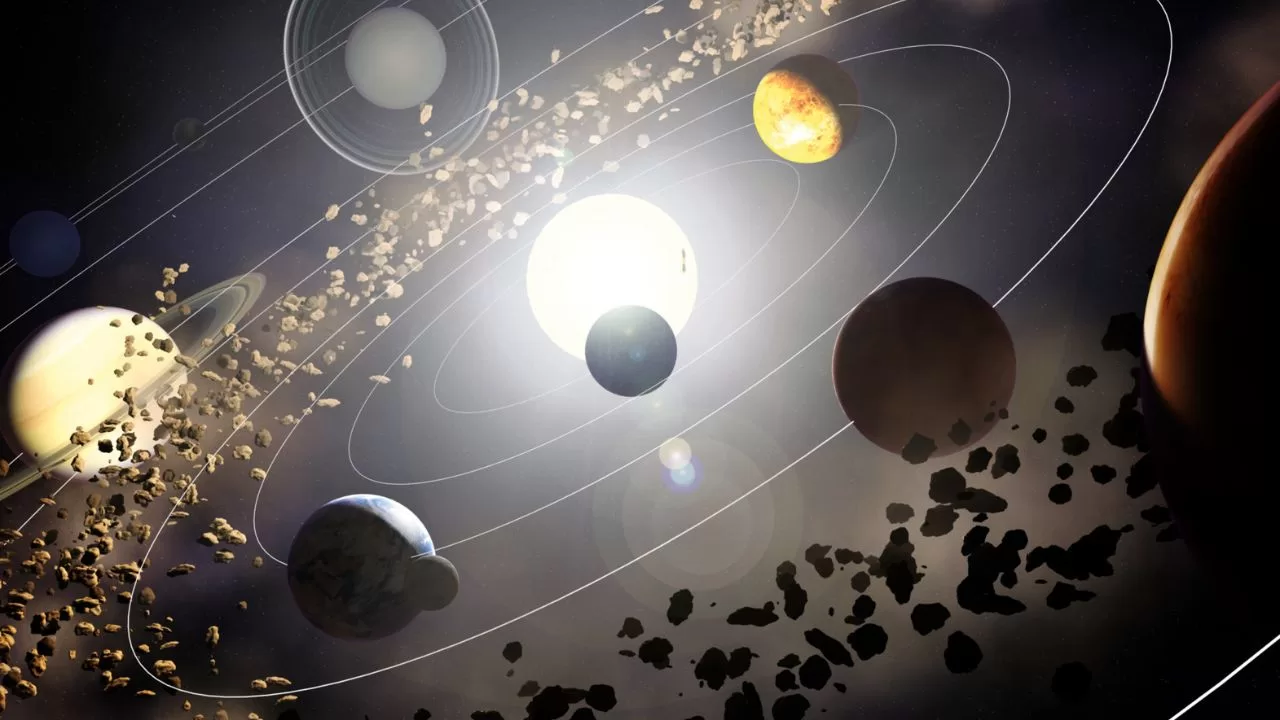

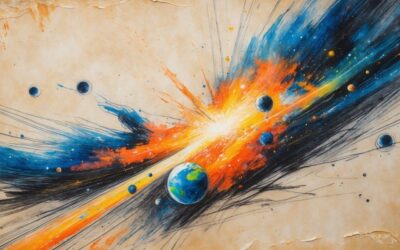

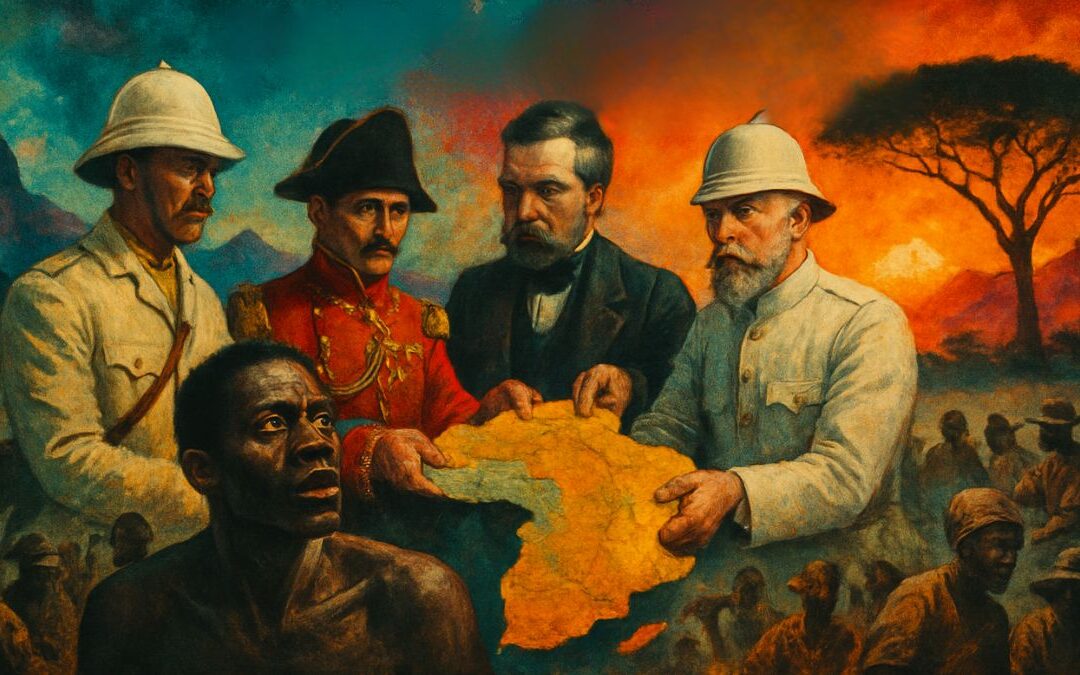



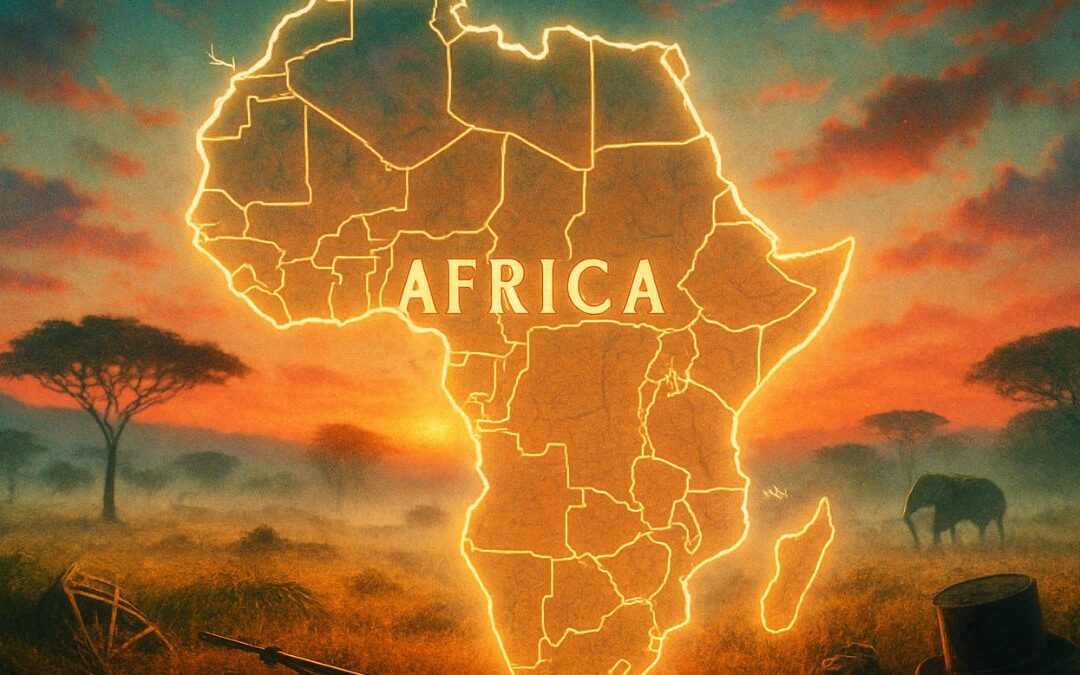

0 Comments